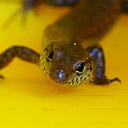Member-only story
A Tale of Three Tamarinds
Atherton Tablelands, Queensland, Australia, 1 January 2020
The Wet Season is late. After a parched November and a only few millimetres of rain in December, the forest is dry. When tiny skinks scamper through the fallen leaves, they sound like goannas. When the goannas march through, they sound like dragons.
But high up in the canopy, tamarinds are fruiting, and the birds are feasting on the bounty while it lasts.
Robertson’s tuckeroo (Rhysotoechia robertsonii) is the most heavily laden. The valved capsules are yellow and orange, the colours of a dusty sunset, and they open like an umbrella to reveal three glossy black seeds. But the seeds lie discarded along the forest edge. What the tamarind-eaters are after is the juicy aril at the base of each seed. It’s smaller than a little fingernail, but that’s where all the good stuff is.
In the afternoon, as the sun slips below the tree tops and the air begins to cool, Australian king-parrots fly in to the silky tamarind (Guioa lasioneura). The parrots crack open the blush-pink cases and extract the seeds, which are cloaked in a yellow jelly aril. Every couple of days, someone must send out a party invitation, because the silky tamarinds are also packed with Lewin’s honeyeaters and Victoria’s riflebirds. They squabble amongst themselves, especially the pugnacious honeyeaters all…
